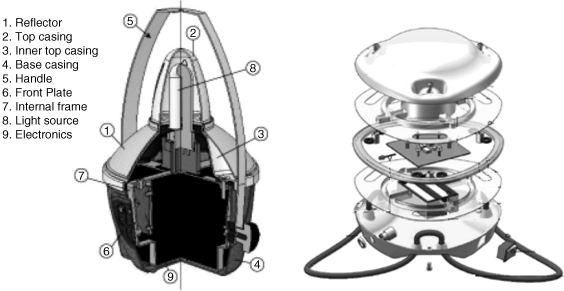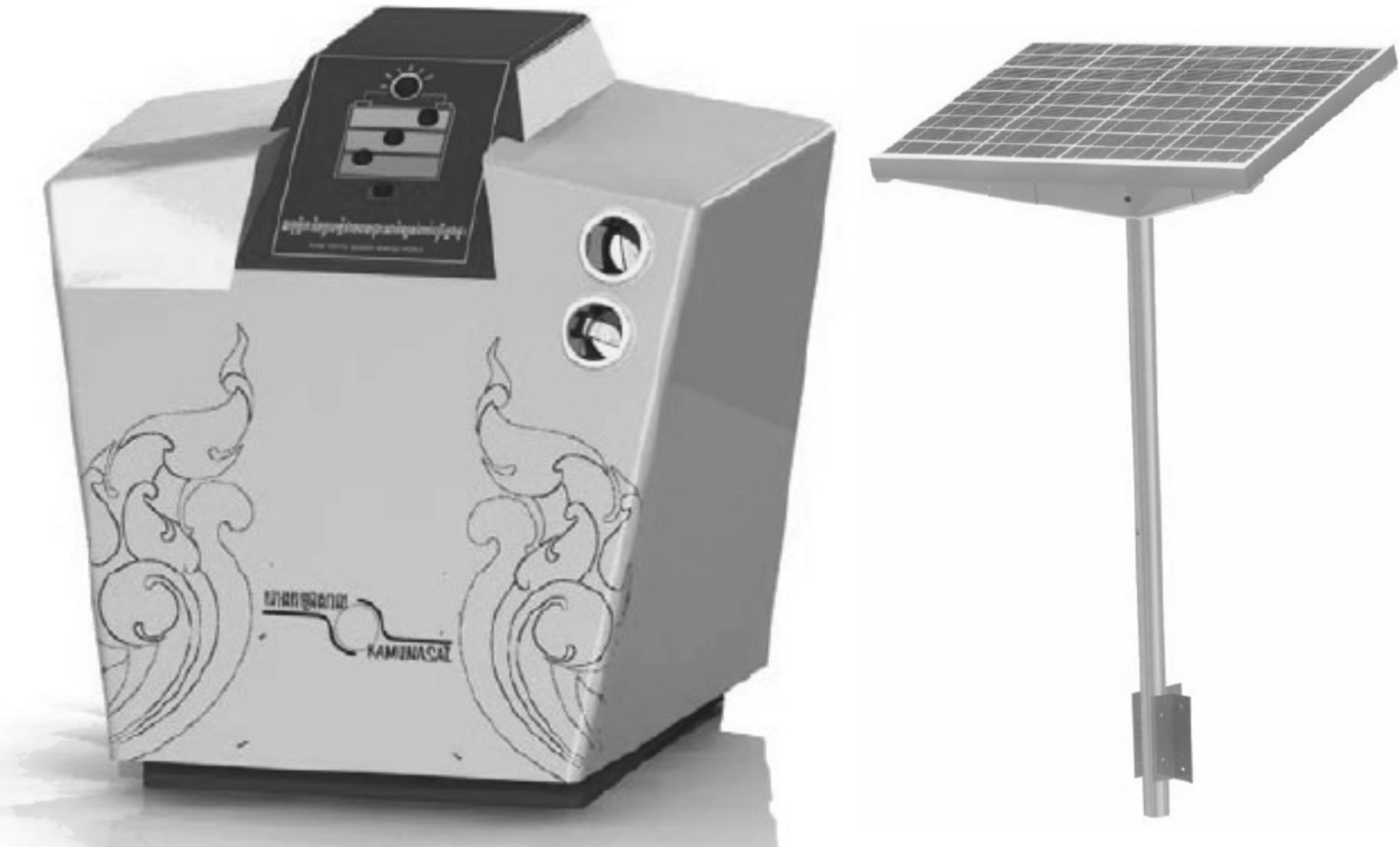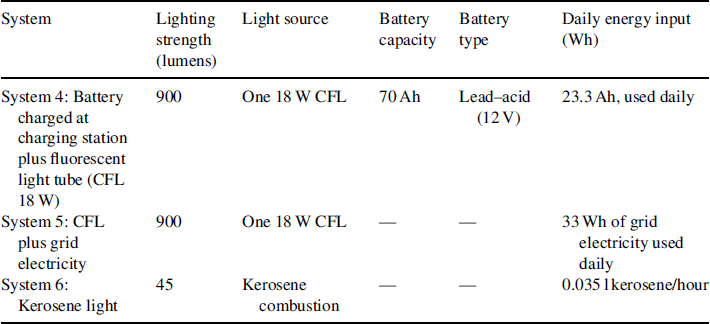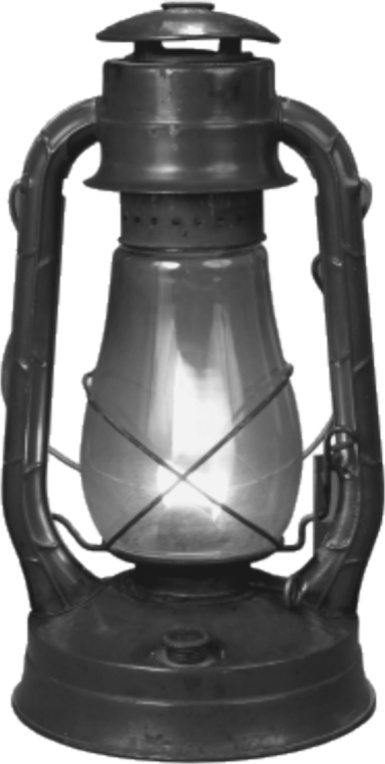B.2 The Lighting Systems
B.2.1 System 1: Angkor Light
The Angkor Light (see Figure B.2.1, left) is a solar lantern fitted with a 3 W CFL and therefore able to deliver a considerable amount of light. The light can be used as a focused light (using the reflector) or as a general-purpose light (for lighting a room). The lantern contains a 4.5 Ah sealed lead–acid battery and comes with a 4.5 Wp solar panel.
B.2.2 System 2: Moonlight
The Moonlight is a smaller scale solar-lighting product. The lantern (pictured in Figure B.2.1, right) is powered by a 0.7 Wp solar panel. The energy that is produced in the daytime is stored in two AA NiCd batteries. This allows the Moonlight to produce light in the evening and night, using six light-emitting diodes (LEDs). The Moonlight can produce 29.5 lumens for 4 hours, or dimmed light for a longer period.
Figure B.2.1 Left: Overview of the Angkor Light's components (Kranen, 2007). Right: Conceptual overview of the Moonlight (Alvarez et al., 2008)

B.2.3 System 3: Solar Home System
The solar home system (SHS) that is used in this study is the Kamworks Solar Home System “medium” (see Figure B.2.2). This system is equipped with a 40 Wp Kyocera solar panel and a 48 Ah lead–acid battery. Also included are the home box (which contains the battery and charging electronics) and three 7 W compact fluorescent lights.
Figure B.2.2 Solar home system medium, home box, and solar panel with mounting structure (Diessen, 2008)

The system can deliver a larger daily amount of energy than is needed to power the light bulbs; this additional energy can be used to power a radio or television, for example. However, to compare the solar home system to the other product systems, it is assumed that all available energy will be used for lighting (by using more light bulbs, e.g., to light multiple homes).
Technical details of the solar-lighting products are summarized in Table B.2.1.
Table B.2.1 Technical details of PV-lighting products.

B.2.4 System 4: Light Delivered by Battery (Charged at Charging Station, Using Diesel)
The most common form of electricity use in Cambodia is the charging of lead–acid batteries at a charging station, and using the charged battery at home to power lights, radio, and/or television. The size of the batteries varies, as does the charging regime. There are many operators who offer their services to villagers, with varying knowledge and capabilities. Generally speaking, batteries are charged using electricity from a diesel-powered generator. The battery has to be transported to and from the charging station by the customer (often by bike or on foot; Figure B.2.3).
Figure B.2.3 Impressions of battery charging at a charging station (Diessen, 2008)

Due to poor battery management, battery lifetime and capacity are much lower than what are theoretically possible. Van Diessen (2008), as a student who worked in Cambodia on a lighting project, describes the situation as follows:
The way of charging is very damaging, the battery capacity decreases rapidly and usually a battery breaks down within a year of use. The batteries are charged without a charge controller, directly by the generator. They are often just tied together by some uncovered copper wires, independent on their state of charge, type or age. Therefore unsafe situations easily occur and overcharging is impossible to prevent. For example, during the field research an operator just determined the moment to stop charging, when a battery in the line started to boil.
(Diessen, 2008, p. 20)
To model this situation, it is assumed that a battery has a lifetime of 1 year, and during its lifetime has an average capacity of 70% of its rated capacity (thus, a 100 Ah lead–acid battery will deliver only 70 Ah on average). The charging efficiency is highly dependent on the state of charge (SOC) (Stevens and Corey, 1996); the higher the SOC, the lower the efficiency is. At a very low SOC the charging efficiency can be as high as 95%, whereas the efficiency drops to around 50% at a very high SOC. An average of 70% was taken as a typical charging efficiency.
B.2.5 System 5: CFLs and Electricity from the Grid
To determine if PV-lighting solutions are beneficial when there is also access to grid electricity, a system of a CFL connected to grid electricity is also considered. A readily available model for Chinese electricity (largely coal-fired power plants) is used as a proxy. The system comprises a CFL, electrical wiring, and emissions associated with electricity production.
B.2.6 System 6: Kerosene Lamp
Another widely used source of light is kerosene lamps (Figure B.2.4). A fuel is burned on a wick to provide light. The fuel consumption rate can be adjusted by moving the wick up or down, adjusting the size of the flame. According to a report by Alsema (2000), the fuel consumption of a typical kerosene lamp is between 0.02 and 0.05 L per hour, delivering a lighting strength of 45 lumens. Technical details of the “conventional” lighting products are shown in Table B.2.2.
Table B.2.2 Technical details of conventional lighting systems.

Figure B.2.4 Example of a kerosene lamp

